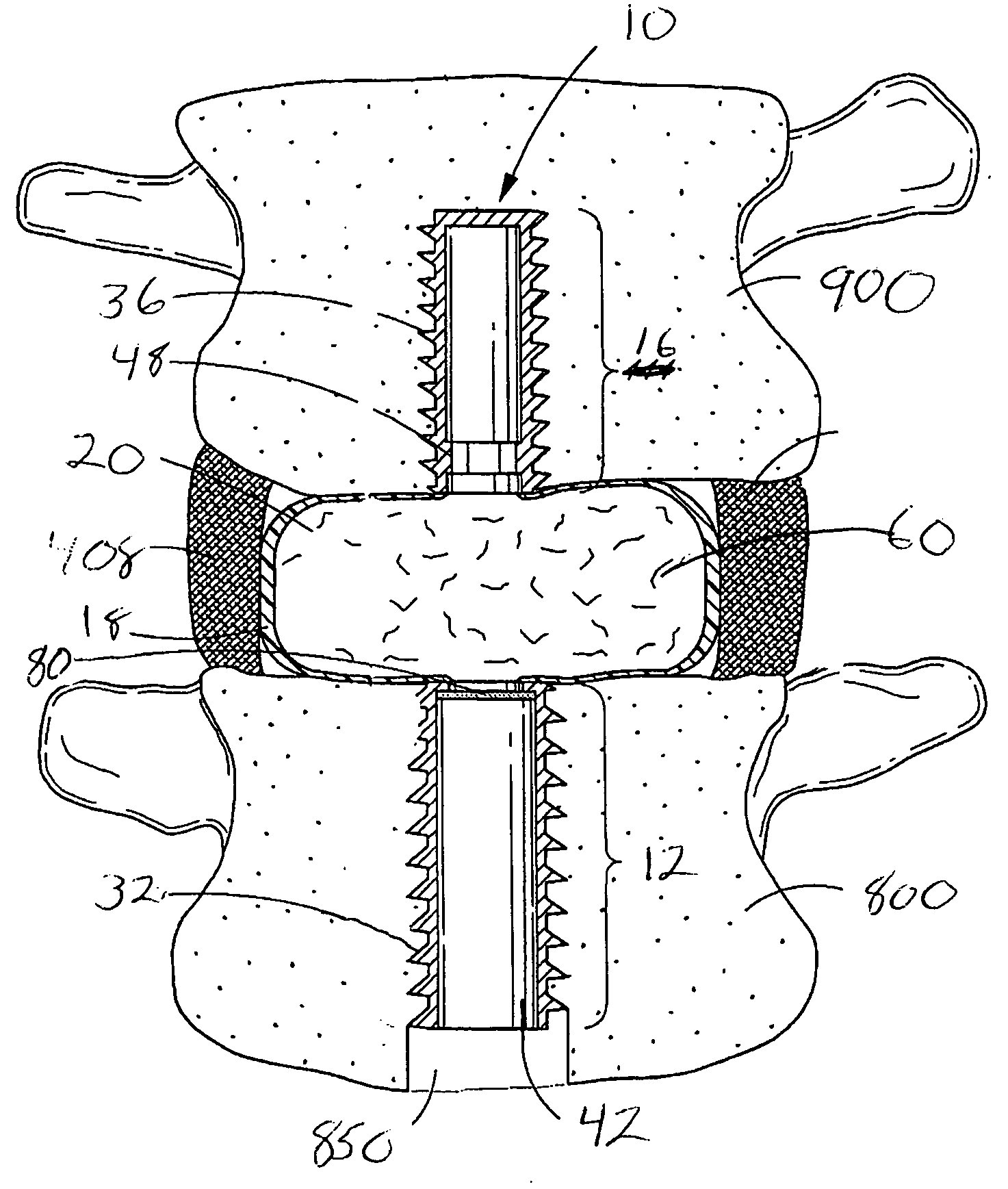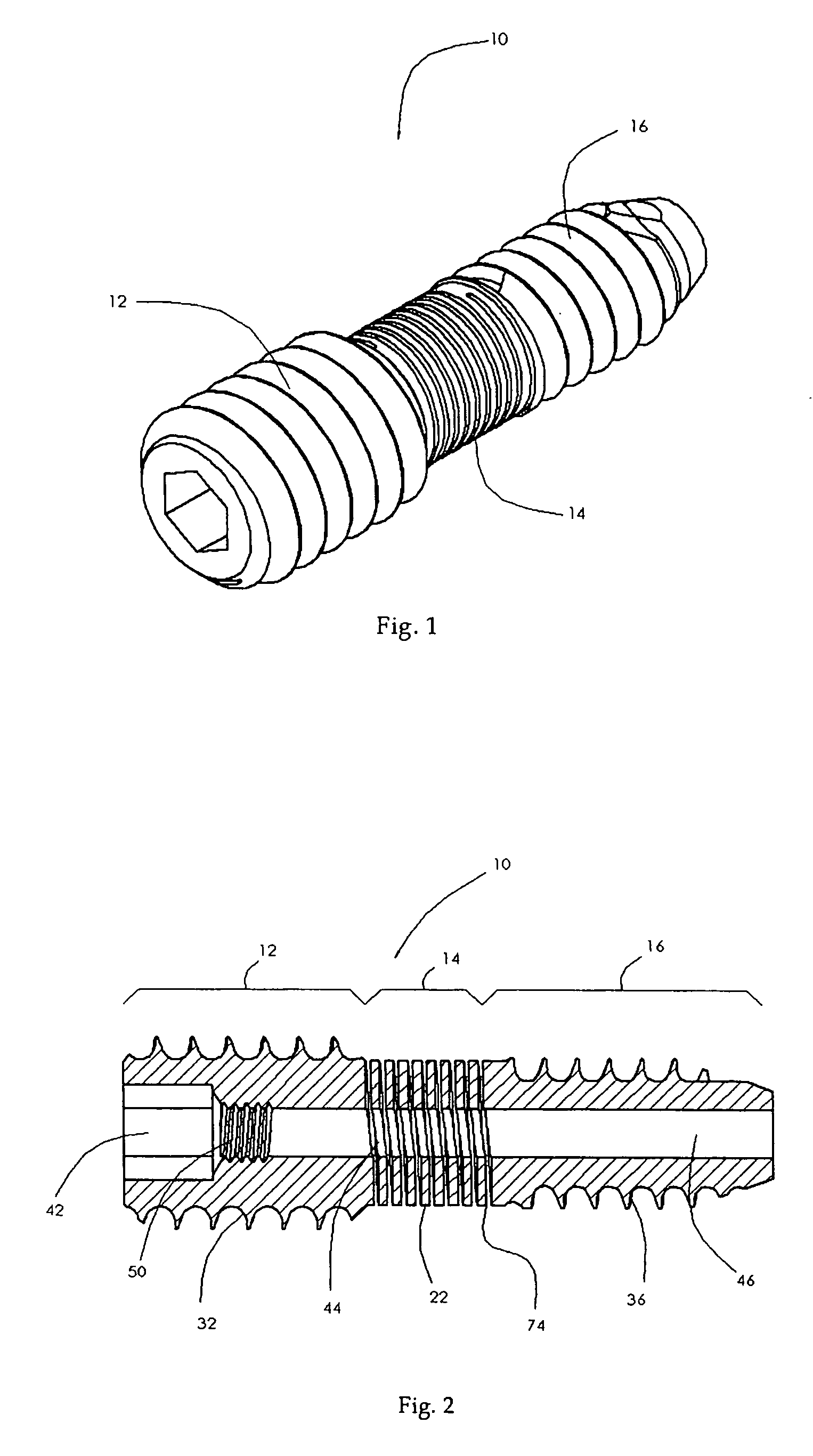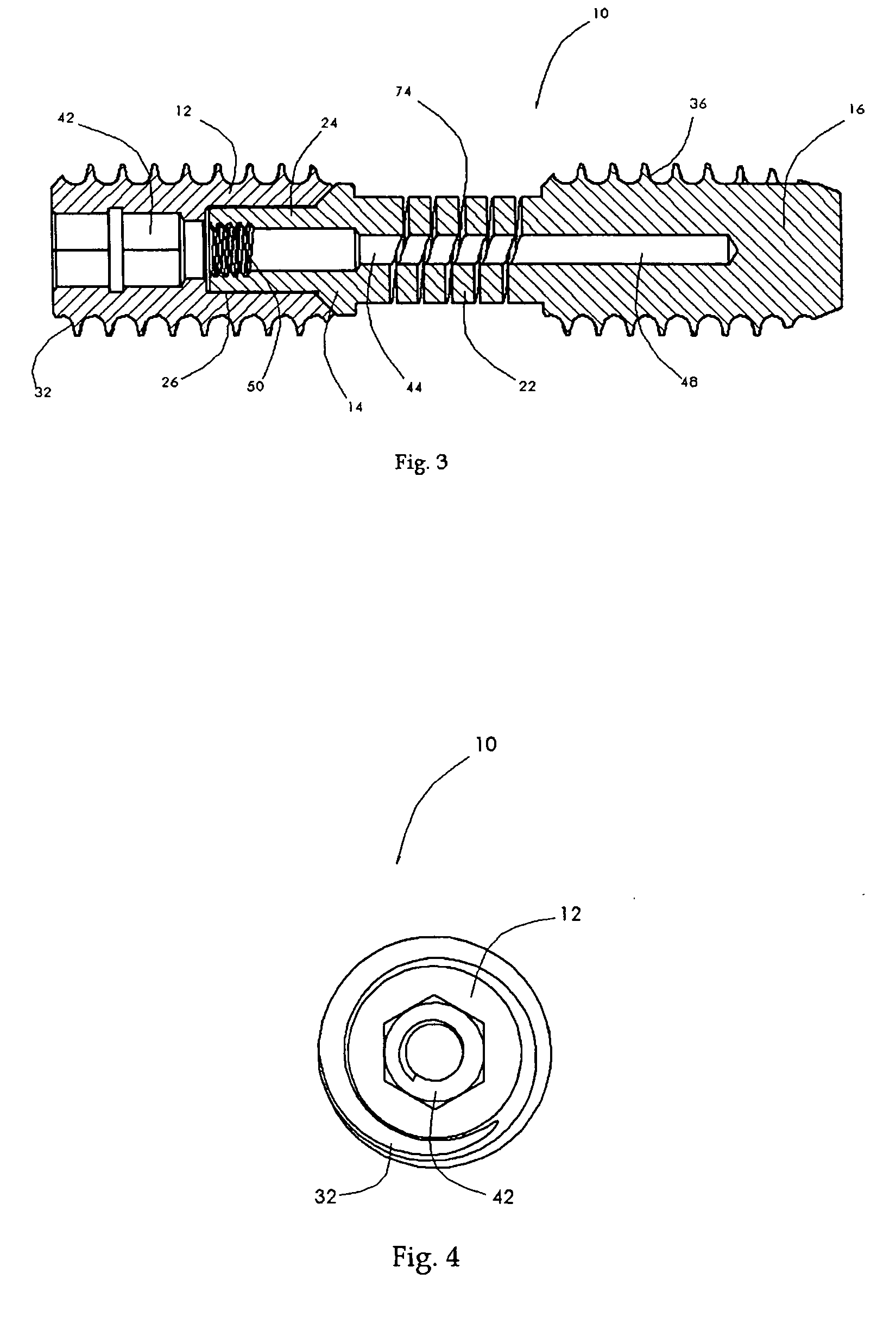Dual anchor prosthetic nucleus apparatus
a nucleus and prosthetic technology, applied in the field of spinal apparatus and method, can solve the problems of affecting both workforce productivity and health care expense, affecting the productivity of workers, and affecting the quality of life of workers, and achieve the effect of less immediate trauma and greater volum
- Summary
- Abstract
- Description
- Claims
- Application Information
AI Technical Summary
Benefits of technology
Problems solved by technology
Method used
Image
Examples
Embodiment Construction
[0104] Embodiments of mobility preservation apparatus 10 in accordance with the present invention are generally illustrated throughout the figures for exemplary purposes. A mobility preservation apparatus 10 are generally configured as an elongated body that is substantially radially symmetrical about its longitudinal axis as illustrated throughout the figures. A mobility preservation apparatus 10 may include a proximal body 12, an intermediate body 14, a distal body 16 and an expandable membrane 18 operatively connected to one another as discussed below. In accordance with the present invention, mobility preservation apparatus 10 are generally configured to be implanted axially within the spine. More particularly, mobility preservation apparatus 10 may position at least a portion of the mobility preservation apparatus 10 in the disc space 860 between two adjacent vertebrae when positioned within a patient. The mobility preservation apparatus 10 may carry at least a portion of the l...
PUM
| Property | Measurement | Unit |
|---|---|---|
| aspect ratio | aaaaa | aaaaa |
| thick | aaaaa | aaaaa |
| water content | aaaaa | aaaaa |
Abstract
Description
Claims
Application Information
 Login to View More
Login to View More - R&D
- Intellectual Property
- Life Sciences
- Materials
- Tech Scout
- Unparalleled Data Quality
- Higher Quality Content
- 60% Fewer Hallucinations
Browse by: Latest US Patents, China's latest patents, Technical Efficacy Thesaurus, Application Domain, Technology Topic, Popular Technical Reports.
© 2025 PatSnap. All rights reserved.Legal|Privacy policy|Modern Slavery Act Transparency Statement|Sitemap|About US| Contact US: help@patsnap.com



